Trylletromler
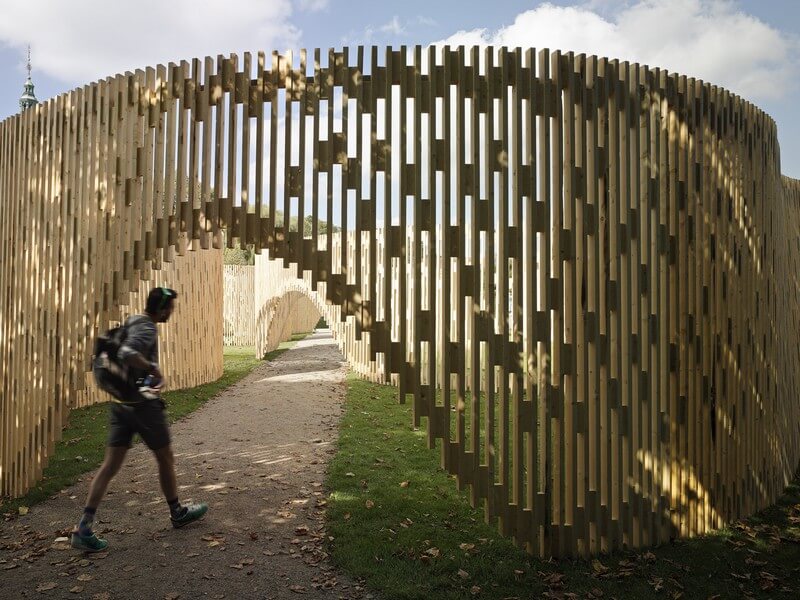
The Renaissance garden design of Rosenborg Castle is the oldest known example of garden design in Denmark. The design draws heavily on principles of Euclidean geometry. This language of absolute space was long regarded as the construction principle of the world. The architecture, urbanism and landscape design that were derived from it, were essentially aiming to create order out of chaos using absolute shapes: line, square, triangle, sphere and cone.
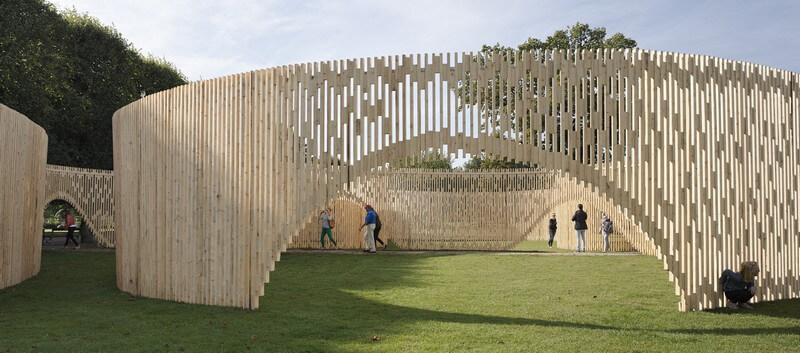
In a later stage baroque elements were added, such as mazes and diagonal paths. Also Kavalergangen and Damegangen, two tree-lined avenues, were introduced. After these alterations the garden was never drastically changed. This classical representation of space was meticulously maintained until today. This is the context for the question to design a pavilion, which is accessible to all public, appears innovative in its spatial expression and is challenging by its idiom.
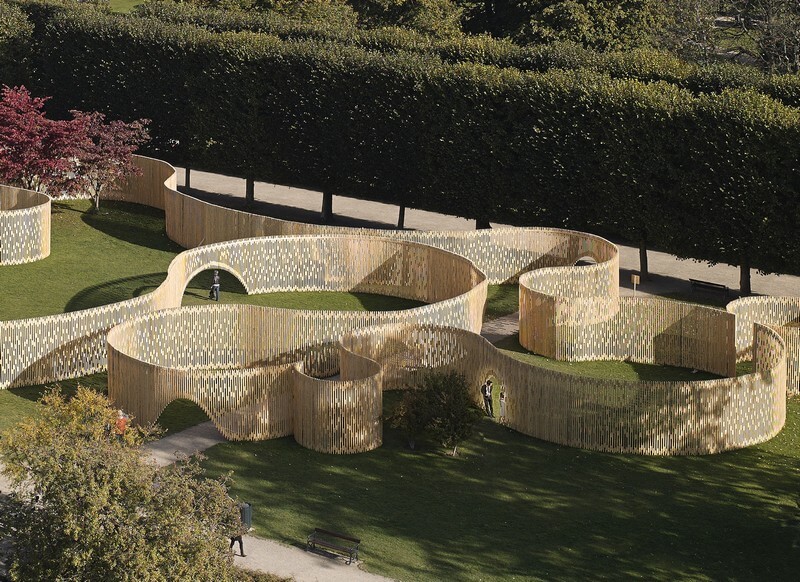
While remaining removable the design had to be realized within a very limited budget. FABRIC Architecture therefore introduced a new spatial concept in the royal garden in Copenhagen by stretching the understanding of the ‘pavilion’ towards the most elementary architectural element in garden design: the fence. This new understanding of space provided by questioning strict order in the garden design and give way to ambivalence and hybridity is a ‘ blurring strategy’.
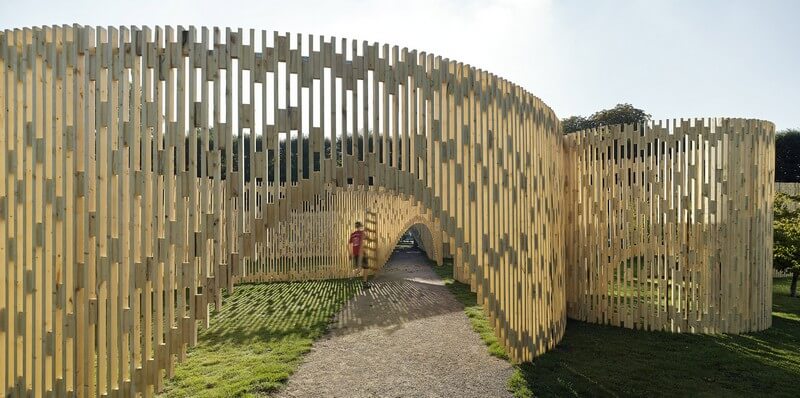
This strategy addresses three independent paradoxes by provoking the notions inside and outside, by introducing a maze that is paradoxically transparent and by creating an illusion of motion. First of all, the fence as a freestanding structure is designed to restrict movement across a boundary. By folding and wrinkling the fence on the location, it produces new meanings of being spatially included or excluded. Secondly, openings in the fence create routes through the pavilion. Most openings in their appearance resemble a partly raised curtain, making the fence look very light. By avoiding openings on obvious routes on sightlines, visitors are forced to find their way through the sequence of circle shaped spaces.
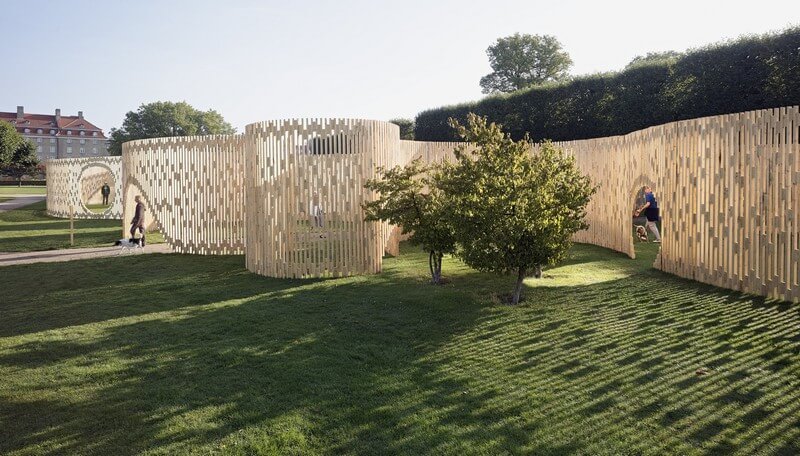
And not all the openings are accessible to everybody. Some openings only allow kids into the pavilion, escaping their parents gaze as they explore the pavilion. The fence so to say acts like a see through maze. Thirdly, the fence gives new meaning by its potential to create the illusion of motion via the so called moiré patterns while moving along the fence. The fence is made out of three thousand standard pieces of Nordic timber, which are joined using an irregular pattern of wedges. The repetitive openings between the bars of the fence and their connections create a continuous moving image.
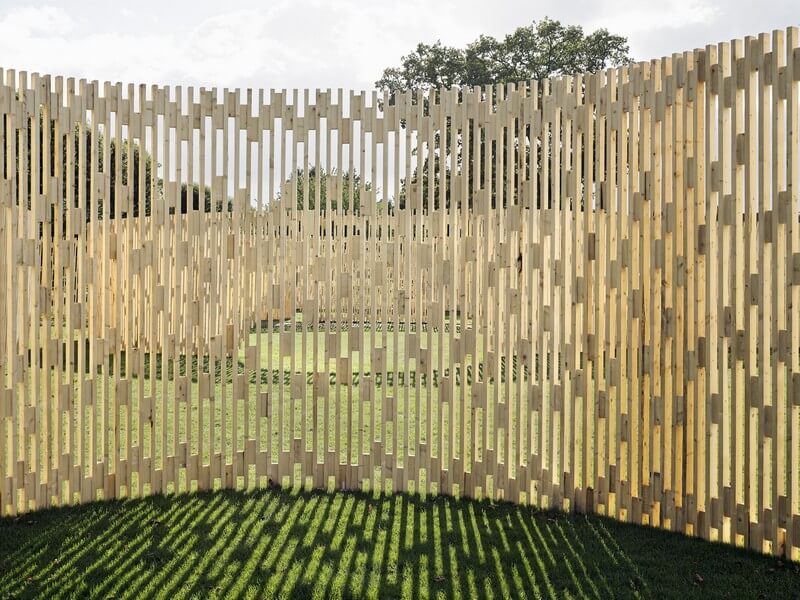




























Comments